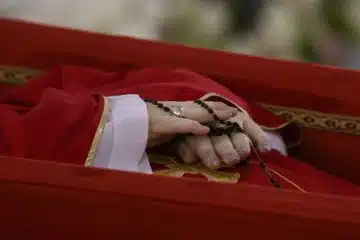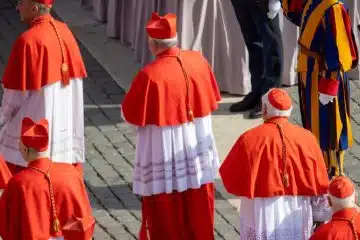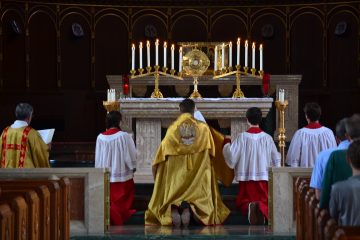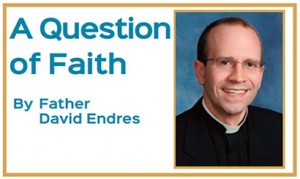Fr. Endres Question of Faith – How do we receive His Body and Blood?
Q: I received the Eucharist under both forms – the host and from the chalice – for the first time recently and I felt Christ in my heart as never before. I thought it was because I was receiving the Precious Blood and not just the Body, however, when I explained this to my pastor he said that when we receive the host we receive both His Body and Blood. When a priest consecrates, he prays over the bread and wine separately. How can each be the Body and Blood of Jesus when consecrated separately and specifically?
A: Every time we receive holy Communion under the form of bread or wine, we receive the whole Christ – body and blood, soul and divinity. The doctrine called “concomitance” (from the Latin word for “accompaniment”) teaches that the Body of Christ and the Precious Blood cannot be separated even when received separately. One accompanies the other. For instance, when someone receives only the host, he or she receives Jesus’ body and blood. Likewise, for someone who receives only the Precious Blood (which may be necessary for someone with celiac disease, for instance, who cannot ingest gluten), he or she receives the body and blood of the Lord.
We might ask, then, why in many parishes are the laity offered the opportunity to drink from the chalice? Receiving both kinds (often called “species”) of the Eucharist is a fuller sign of Jesus’ presence – Body and Blood. A recent instruction from the Vatican acknowledges, “The purpose, then, of receiving Holy Communion under both kinds, is not that the faithful receive more grace than when they receive it under one kind alone, but that the faithful are enabled to appreciate vividly the value of the sign” (“Doctrinal Formation and Communion Under Both Kinds,” issued in 2011).
Sometimes practical concerns, including the number of the faithful and the lack of suitable ministers to distribute, prevent the distribution of the Precious Blood.
At other times, based in individual circumstances, there can be concern about determining the proper amount of wine to be consecrated or the need to safeguard against spillage. If the Precious Blood is not offered to the laity at a given Mass, it is important to realize that communion under one kind alone is not deficient. As St. Thomas Aquinas taught, “Nothing is lost by the body being received by the people without the blood” (Summa Theologiae, III, question 80, article 12). Those who do not have an opportunity to receive from the chalice should not feel that they received Jesus any less fully.
If the Precious Blood is to be offered to the faithful, the church reminds us that we must approach the chalice with a proper understanding that what appears to be wine is no longer. Jesus is fully present and only the external realities (the “accidents”) of the wine remain. Like receiving the host, we are called to approach the Precious Blood with reverence, recognizing the presence of Jesus.
While receiving under both kinds does not increase the grace received through Holy Communion, God can choose to allow His presence to be felt at different times in our lives in various ways, often when unexpected. Receiving the Precious Blood for the first time may have provided that opportunity. Whether we receive Him under one or both forms, let us thank God for the gift of His eucharistic presence and how he feeds us with his very self, reminded of the words of 1 Corinthians 11: 26: “For as often as you eat this bread and drink the cup, you proclaim the death of the Lord until he comes.”














